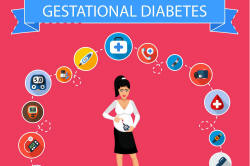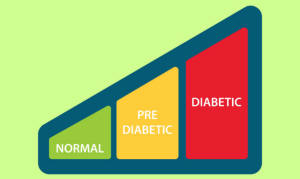
Types of Diabetes
Type 1 Diabetes
In this condition, the body loses its ability to generate
sufficient insulin and, as a result, it struggles with balancing
the glucose levels in the blood.
This happens because the
patient’s own immune system attacks and kills the beta cells,
which are released by the Pancreas to produce insulin, after
mistakenly considering them “foreign” entities trying to cause
an infection.
Type 1 diabetes is neither preventable nor curable. It has no
relation whatsoever with a patient’s lifestyle or dietary
habits. Genetics, on the other hand, play a key role in how
likely a person would be afflicted with type 1 diabetes. People
who have the Human Leukocyte Antigen (HLA) gene are at a risk of
suffering from type 1 diabetes. Nevertheless, only five percent
of people with the HLA gene grow to develop this complex health
condition.
Type 2 Diabetes
This condition develops when a person’s beta cells lose their
function and fail to produce sufficient amounts of insulin. The
scarcity of insulin causes an increase in the blood sugar
levels. However, this happens so gradually, and the symptoms are
so insidious, that it goes unnoticed for years. By the time a
diagnosis is made, nearly half the beta cells may have very well
lost their function. Type 2 diabetes can also incorporate
insulin resistance. This means that the cells start to resist
against accepting the insulin available in the bloodstream for
energy production.
In the long run, the accumulation of glucose in blood can damage
several organs, including the eyes, heart and kidneys. In the
past, type 2 diabetes was referred to as maturity-onset
diabetes, adult-onset diabetes and noninsulin-dependent
diabetes. It is by far the most prevalent form of diabetes.

Gestational Diabetes
It is mostly a temporary condition that affects a tiny percentage of pregnant women, because pregnancy-triggered changes lead to insulin resistance. Some women are more prone to gestational diabetes than others, owing to the following factors:
- Overweightness or obesity
- Being a prediabetic
- Birthing a baby over 9 pounds in the past
- Family history of type 2 diabetes
- Polycystic ovary syndrome
Drug-Induced Diabetes
This condition is triggered after consumption of medications,
which have nothing to do with diabetes, by patients with no
history of diabetes.
consumption of medications,
which have nothing to do with diabetes, by patients with no
history of diabetes.
This happens because some medication pills interfere with the pancreatic process of producing and releasing insulin, while others disrupt the purpose of insulin.
Many medications are associated with
increasing the chances of type 2 diabetes, including but not
limited to:
- Corticosteroids
- Beta blockers
- Thiazide diuretics
- High blood pressure medications
- Statins
- Immunosuppressive drugs
- Antipsychotic drugs
Prediabetes
Prediabetes is a condition in which a person’s sugar levels
are so high that they are on the verge of being afflicted with
type 2 diabetes. What is alarming is that a lot of people have
prediabetes and are completely oblivious to it. Nearly one third
of youths and middle-aged people in the United States have
prediabetes; however, only around 11% know about their condition
because prediabetes has no symptoms.

It is a good idea to take a medical test as soon as possible to
ascertain where you stand in terms of being afflicted with type
2 diabetes. The Oral Glucose Tolerance Test (OGTT) is a simple
method that incorporates consuming high quantities of sugar and
then examining the time that the body takes to restore its
glucose levels to normalcy. The body should be able to
accomplish that within two hours. The test is usually taken on
an empty stomach in the morning after a night of abstinence from
food.
The OGTT test involves drawing of two blood samples: one at the
beginning of the process and another after two hours. In the
latter blood collection, the tested person’s sugar levels are
checked. If the glucose level is below 7.8 mmol/L, the person is
not diabetic. However, if the reading is above 11 mmol/L, the
person is diagnosed with diabetes. Readings between the two
aforementioned levels of 7.8 mmol/L and 11 mmol/L indicate a
phase of prediabetes.